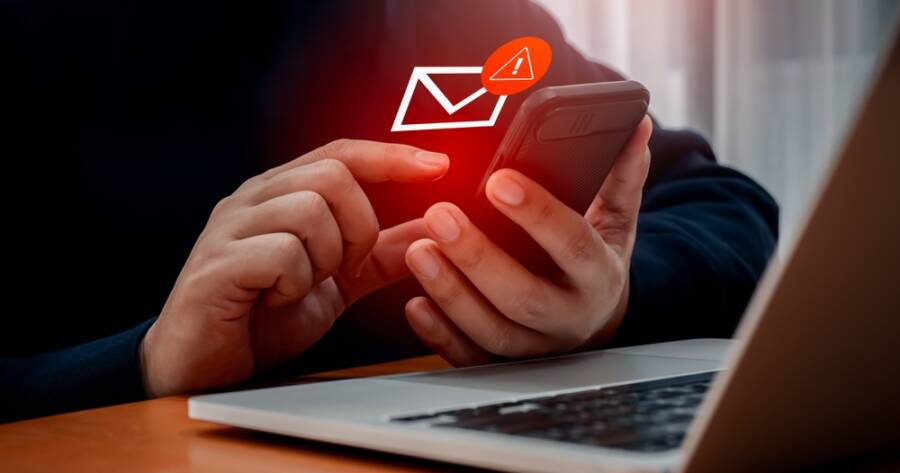Email scams have evolved into sophisticated threats that exploit the digital landscape, targeting both individuals and businesses. Through careful impersonation and creating urgency, email scams deceive recipients into sharing personal data. Understanding the various forms, recognizing warning signs, and protecting against phishing attacks are essential to safeguarding sensitive information in today’s interconnected world.
Understanding Email Scams in Today’s Digital Age
Email scams have become a prevalent cyber threat, designed to trick recipients into disclosing personal information or clicking on malicious links. These scams often impersonate legitimate institutions, creating a sense of urgency to exploit unsuspecting individuals.
For instance, phishing emails might instruct recipients to verify their personal details, such as Social Security numbers or account passwords, by impersonating reputable organizations to exploit the unaware. Over time, scammers have honed their skills, making detection more challenging for users as scammers improve tactics.
Recognizing the Warning Signs
Being able to identify the red flags of phishing emails is crucial. One should look out for unsolicited messages or emails sent from unusual addresses. Moreover, if the URLs embedded in the email do not match the claimed institution, or if there are obvious misspellings and poor grammar, these are typical indicators of a scam. Nevertheless, it’s important to note that scammers have become increasingly sophisticated, sometimes using artificial intelligence to bypass traditional signs like grammar errors. Staying vigilant for similar warning signs, such as unexpected requests for personal data or emails from unfamiliar domains, can aid in preventing potential theft.
Common Phrases You Shouldn’t Ignore
Scammers often rely on emotionally manipulative language to pressure recipients into acting quickly or without thinking. Recognizing the exact wording used in scam emails can serve as an effective first line of defense. While the context may vary, these recurring phrases are major red flags that signal potential phishing or fraudulent attempts. Stay alert when you encounter language that conveys urgency, secrecy, or alarming consequences.
Here are some common phrases you should be cautious of:
- “Your account has been suspended” – Designed to induce panic and prompt you to click a malicious link.
- “Verify your identity immediately” – Often used to collect personal information under the guise of routine security checks.
- “Click here to update your information” – A classic phishing tactic that leads to a spoofed login page.
- “You’ve won a prize!” or “Claim your reward now” – Used to lure users into providing contact or financial information.
- “We’ve detected suspicious activity” – Intended to spark fear, making you more likely to engage with the message.
- “Urgent: Payment required” or “Final notice” – Attempts to pressure you into making a quick payment or sharing billing information.
- “This message is confidential. Do not share.” – Encourages secrecy, making it harder for victims to verify authenticity.
- “Confirm your password to continue” – Used to harvest login credentials under false pretenses.
- “Unusual login attempt from a new device/location” – Another fear-inducing tactic to trick users into revealing their passwords.
- “We couldn’t deliver your package” – Disguised as shipping updates, these emails often contain dangerous links.
Different Forms of Email Scams
Email scams come in various forms, each with distinct tactics tailored to deceive recipients. Spear phishing, for example, specifically targets organizations by pretending to be internal IT or authority figures and targeting specific organizations.
Meanwhile, quishing, or QR code phishing, tricks targets into scanning QR codes leading to fraudulent sites designed to capture sensitive and personal data. Common types of email scams include fake business communications, fraudulent order cancellations, and bank impersonations requesting account verification to steal credentials. Another prevalent form of scam is the business email compromise, targeting businesses with convincing emails for financial gain business email compromise.
Protecting Against Phishing Attacks
Given the versatile nature of email scams, various strategies can be employed to protect against them. One crucial tactic is always confirming any suspicious claim by contacting companies directly through official numbers. It is also wise to avoid sending sensitive information through email, use strong spam filters, and employ digital signatures for added security.
Additionally, using advanced security measures such as two-factor authentication, password managers, and regularly updating passwords can enhance protection advanced security measures. It’s important to report any phishing attempt to the service provider while also marking the email as spam or junk to help block future fraudulent attempts.
Taking Action Against Email Scams
When faced with an email scam, it’s imperative to act swiftly. Users should report suspicious emails to both the spoofed company and their email service providers to help mitigate phishing activities mitigating activities.
Furthermore, any suspected email should be deleted immediately without opening any links or attachments. In cases of suspected data compromise, implementing immediate security changes, such as updating passwords and enabling multi-factor authentication, is essential. Educating people through awareness programs and real-world phishing simulations can significantly aid in reducing the success rate of such scams awareness programs.
Why You Should Learn More About Email Scams Today
Email scams pose significant risks due to their evolving tactics and the potential harm they can cause to individuals and businesses alike. By staying informed and employing robust security measures, one can protect against potential threats and ensure the safety of personal and sensitive information.
As scammers continue to devise new techniques, understanding how to recognize and respond to these attempts can save both time and resources. Investing in knowledge and staying updated with the latest anti-phishing strategies is critical in today’s digital world.

